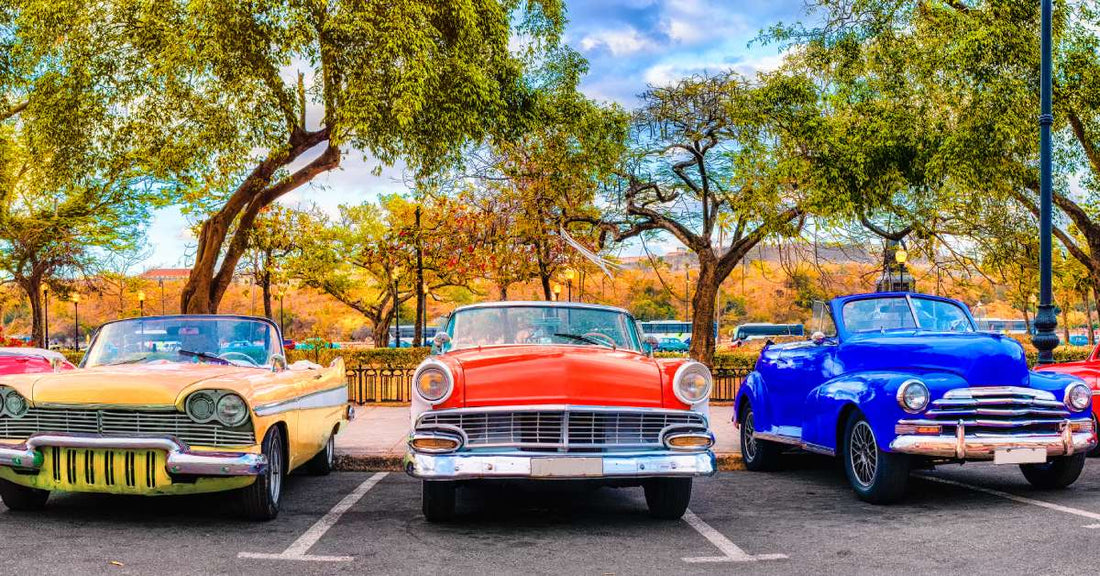Have you ever caught yourself dreamily gazing at a vintage car cruising down the road, its chrome glistening under the sun? Classic cars have a magical allure that transports us back to when automobiles were more than just a means of transportation—they were works of art. You’ve likely considered restoring a classic car to its former glory if you find joy in such timeless beauty. However, many who decide to start restoring classic cars have a pretense of easy work because the engines are simple, and the designs are easy to recreate. Still, many find themselves fooled by these delusions. This blog guides you through everything you need to know about classic car restoration to avoid hardship. This helpful guide informs you of everything from the brief history of classic cars to tips for DIYers.
A Brief History of Classic Cars
The Golden Age of Automobile Manufacturing
The golden age of classic cars spanned from the 1920s to the 1970s, a remarkable era of automotive history. During this period, manufacturers focused on innovation, luxury, and performance, creating vehicles that were functional and works of art.
Iconic Brands and Models
Brands such as Ford, Chevrolet, and Cadillac became household names, producing iconic models we still celebrate today. The Ford Model T revolutionized car ownership, making it a publicly available car. Chevrolet’s Bel Air became synonymous with middle-class North American culture in the 1950s, while Cadillac’s Eldorado was the standard luxury class for upper-class North American households.
The Rise of Muscle Cars
This era also saw the birth of muscle cars, with models such as the Ford Mustang and Chevrolet Camaro captivating enthusiasts with their power and style.
Evolution of Design and Technology
Over the decades, classic car designs evolved from simple, practical vehicles to luxurious, high-performance machines. Technological advancements brought features such as power steering, automatic transmissions, and advanced suspension systems. These innovations made driving more comfortable and enjoyable, cementing the status of classic cars as prized possessions.
Timeless Appeal
Classic car shows and auctions continue to draw crowds, as these timeless vehicles hold a special place in the hearts of collectors and car lovers alike.
The Classic Car Restoration Process

Initial Assessment and Planning
The first step in any restoration project is to assess the car’s condition. Inspecting an older vehicle requires looking at the body, engine, and interior. Once you understand what to do, you can create a detailed plan and budget.
Mechanical and Bodywork Restoration
Mechanical restoration involves repairing or replacing the engine, transmission, brakes, and other critical components. Bodywork restoration focuses on fixing dents, rust, and other imperfections in the car’s exterior. This step often requires specialized tools and skills, making having or hiring experts essential.
Upholstery and Detailing
The last step is to restore the car’s interior. Vintage car renovation includes reupholstering seats, replacing carpets, and refurbishing the dashboard. Mindfulness is crucial here, as the interior finishes can influence the final appearance.
Tools and Materials Needed for Restoration
Essential Tools for the Job
A classic car restoration requires various tools, from basic hand tools to specialized equipment. Some essential items include wrenches, screwdrivers, jacks, and lifts, which you need for routine tasks such as removing and installing parts. You may also need welding equipment for structural repairs, paint sprayers for rendering the car’s exterior, and diagnostic tools for troubleshooting electrical and mechanical issues. Additionally, having a comprehensive set of sockets and ratchets can make the job easier and more efficient.
High-Quality Materials for Authenticity
You need the same or similar materials the original vehicles used to have to properly restore these cars. Sourcing original or reproduced parts maintains the car’s historical accuracy when going for an authentic look. Also, using high-grade paint that matches the original color codes and buying replica upholstery helps restore the genuineness of the vehicle’s interior and exterior. Using these things will keep the car looking original for years to come.
Challenges Faced in Classic Car Restoration
Sourcing Rare Parts
A massive problem in classic car restoration is finding rare and original parts. Many of these parts are no longer in production, requiring you to search through salvage yards, online marketplaces, and specialty dealers. Patience and persistence are key.
Dealing With Structural Damage
Older cars often suffer from structural damage, such as rust and corrosion. This process can take time and be expensive, so thoroughly inspecting the vehicle before restorating it is crucial.
Legal and Documentation
Compile and verify all documentation, including the classic car’s history and VIN before restoring it. Make sure to obtain a title, learn the local registration requirements, and comply with emissions and safety standards. Also, look for insurance plans offering full coverage for complete vehicle restoration.
Tips for DIY Classic Car Restoration Setting a Realistic Budget and Timeline
Setting a Realistic Budget and Timeline
Restoring a classic car requires time, patience, and money. Ensure your budget is realistic and doesn’t cause you to feel overwhelmed when you must buy something that costs more than expected. Break the project down to avoid the anxiety of not reaching milestones on time.
The Importance of Documentation and Research
Documenting every step of the restoration process is essential, so record the work completed, parts used, and the costs during each restoration phase. Researching these things on your own and learning from other classic car enthusiasts in the area is essential.
Staying Safe While DIYing a Classic Car Restoration
Always prioritize safety when working on your classic car. Use proper protective gear, ensure you ventilate your workspace well, and follow safety guidelines for using tools and chemicals.
Seeking Professional Help When Needed
While the DIY approach can be rewarding, don’t hesitate to seek professional help when necessary. Certain aspects of restoration may require expertise and equipment beyond the average hobbyist’s capabilities. Professionals can assist in bodywork, engine rebuilding, and paint jobs. Hiring a professional for specific tasks can save you time, reduce errors, and ultimately enhance your classic car’s value.
Using Items Made Specifically for Classic Cars
Restoring a classic car requires you to use items made explicitly for the vehicle. Custom-made parts, fluids, and accessories designed for classic cars often meet the original specifications better than generic replacements. Choosing specialized parts over generic copies preserves the vehicle’s history and makes the restoration more plausible. Be sure to seek out reputable suppliers specializing in classic car components to ensure you get the highest quality parts.
Stay Classic With Driven Racing Oil
A classic car restoration takes time, effort, and dedication. The satisfaction of seeing your vintage beauty restored to its former is beyond compare. We have shared everything you need to know about classic car restoration with this guide. Now that you’re knowledgeable, it’s time to take the next step. Consider Driven Racing Oil for classic car engine oils. We are the experts you can lean on for advice on engine care in vintage vehicles. Drive yourself to the finish line of keeping your classic beauty timeless.

